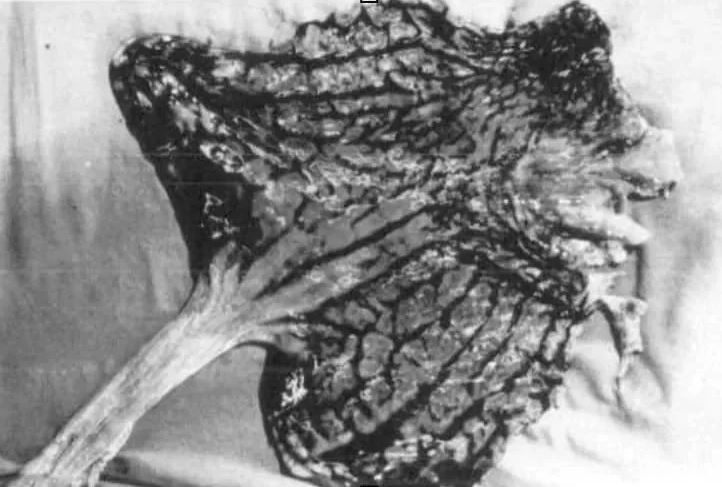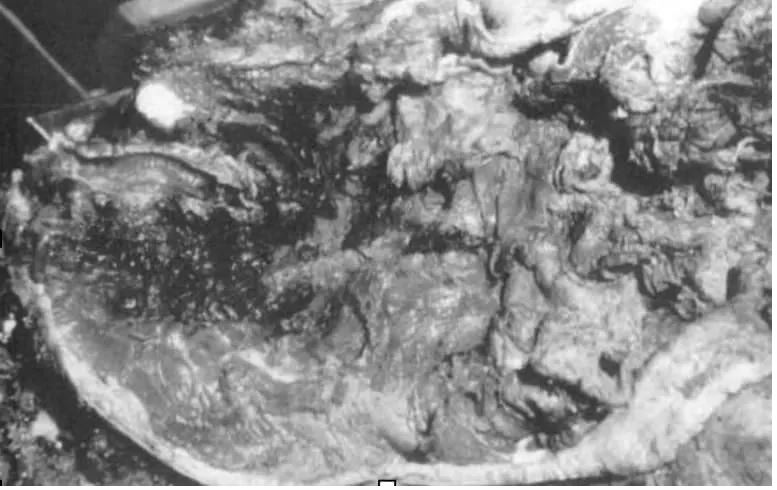The Bi4 Dolphin Incident Photos Journey through History
Bi4 Dolphin incident photos capture the stark reality of one of the most tragic events in the history of offshore drilling. The Byford Dolphin, a semi-submersible drilling rig, was a marvel of engineering when it was first launched. Operating primarily in the challenging environments of the British, Danish, and Norwegian sectors of the North Sea, it played a crucial role in exploring and extracting vital oil and gas resources. The significance of this rig in the offshore drilling industry cannot be understated, as it represented a period of rapid technological advancement and economic growth.
However, the legacy of the Byford Dolphin is overshadowed by a series of accidents and incidents that highlight the inherent risks of deep-sea drilling. Among these, the most catastrophic was the explosive decompression incident in 1983, which resulted in the loss of five lives and left another severely injured. The photos from this incident serve as a grim reminder of the dangers faced by those working on such rigs. They show the twisted metal and shattered infrastructure, bearing witness to the force of the accident.
The images also depict the immediate aftermath, with rescue operations and investigations into what went wrong. These photos are not just historical records; they are powerful narratives that speak to the need for stringent safety measures and continuous improvement in the design and operation of drilling rigs. They underscore the importance of learning from past mistakes to prevent future tragedies.
The Byford Dolphin’s story is a complex tapestry of engineering triumphs and human vulnerabilities. While it contributed significantly to the offshore drilling sector, the photos of its darkest days remind us of the perpetual balance between harnessing natural resources and ensuring the safety of those who toil in such perilous conditions.
| Aspect | Description |
|---|---|
| Byford Dolphin Overview | A marvel of engineering launched to explore and extract oil and gas in the British, Danish, and Norwegian sectors of the North Sea. |
| Significance | Represented a period of rapid technological advancement and economic growth in the offshore drilling industry. |
| Legacy | Overshadowed by accidents and incidents, highlighting the risks of deep-sea drilling. |
| Explosive Decompression Incident (1983) | Resulted in five deaths and one severe injury; photos show twisted metal and shattered infrastructure. |
| Photos | Depict the aftermath, rescue operations, and investigations, serving as powerful narratives for safety improvements. |
| Lessons | Emphasizes the need for stringent safety measures and learning from past mistakes to prevent future tragedies. |
Contents
History and Specifications of Byford Dolphin
The Byford Dolphin drilling rig initially took to the seas under the name “Deep Sea Driller.” Constructed by the Aker Group, a renowned name in maritime engineering, this semi-submersible rig was a significant addition to the offshore drilling industry when it was completed in 1974. The Aker Group’s expertise ensured that the rig was equipped with state-of-the-art technology of its time, setting a benchmark in drilling operations.
In its early years, the rig operated under the ownership of Byford Dolphin Pte. Ltd., a subsidiary of Fred. Olsen Energy. Over the years, the rig underwent several changes in ownership and operators, reflecting the dynamic nature of the energy sector. These transitions were not just administrative; they often led to upgrades and changes in the rig’s operational focus, adapting to the evolving demands of oil and gas extraction.

The Byford Dolphin boasted impressive dimensions, measuring 108.2 meters in length, 67.4 meters in beam, and 36.6 meters in depth. Such size was necessary to accommodate the complex machinery and systems essential for deep-sea drilling.
The rig’s drilling and operational capacities were equally remarkable. It had a maximum drilling depth of 61 kilometers and could operate at a water depth of up to 460 meters. This capability allowed it to tap into deep-sea oil reserves that were previously unreachable. The crew capacity of 102 berths indicated that it was designed for large-scale operations, ensuring that all necessary personnel could be accommodated comfortably during extended periods at sea.
Key features of the Byford Dolphin included a towering derrick, standing at 49 meters, equipped with a Shaffer top compensator for precise drilling control. The blow-out preventer, a critical safety feature, was a Hydril model capable of withstanding pressures up to 10,000 kPa. Additionally, the rig housed two 40-tonne deck cranes, essential for moving heavy equipment and supplies around the vast operating deck.
| Aspect | Description |
|---|---|
| Original Name | Deep Sea Driller |
| Manufacturer | Aker Group, known for maritime engineering excellence |
| Completion Year | 1974 |
| Initial Owner | Byford Dolphin Pte. Ltd., a subsidiary of Fred. Olsen Energy |
| Ownership and Operation | Underwent several changes, reflecting the dynamic energy sector; led to upgrades and operational focus shifts |
| Dimensions | Length: 108.2m, Beam: 67.4m, Depth: 36.6m |
| Drilling and Operational Capacities | Maximum drilling depth: 61km, Water depth operation: up to 460m |
| Crew Capacity | 102 berths |
| Key Features | Derrick height: 49m with Shaffer top compensator; Hydril blow-out preventer; Two 40-tonne deck cranes |
Notable Incidents and Accidents are Presented Via Video
In a harrowing incident on March 1, 1976, the Byford Dolphin, then known as the Deep Sea Driller, ran aground while transitioning from a block in the North Sea to Bergen. The severe weather and rough seas played a crucial role in this mishap, leading to a full-scale evacuation of the crew. Unfortunately, this evacuation was not without loss; six individuals tragically perished when they fell out of their boats during the chaotic rescue operations. This incident highlighted the perilous nature of offshore drilling and the importance of having robust safety protocols in place.
One of the most catastrophic events in the history of the Byford Dolphin occurred on November 5, 1983. During operations in the Frigg gas field, an explosive decompression in the diving chamber system led to the immediate deaths of four divers and serious injuries to others. The normal procedure required several safety steps, including sealing the diving bell door and depressurizing the trunk connecting the bell to the chambers. However, due to a fatal error, the clamp securing the trunk was prematurely opened, causing a rapid decompression from 9 atmospheres to 1 atmosphere.
The video presents and clearly explains the incident:
In addition to these major accidents, the Byford Dolphin experienced other incidents that further tarnished its operational record. On April 17, 2002, a 44-year-old Norwegian worker was fatally struck on the head in an industrial accident. This incident led to the rig losing a significant exploration contract with Statoil, which cited concerns over the rig’s safety and operating procedures. The financial and reputational impact of this accident was substantial, costing the company millions in lost income and further emphasizing the need for rigorous safety measures in the industry.
| Incident Date | Description |
|---|---|
| March 1, 1976 | The rig, then known as Deep Sea Driller, ran aground in the North Sea en route to Bergen due to severe weather and rough seas, leading to a full-scale evacuation and the tragic loss of six lives. |
| November 5, 1983 | An explosive decompression in the diving chamber system at the Frigg gas field caused the immediate deaths of four divers and serious injuries to others due to a premature opening of the trunk connecting the diving bell to the chambers. |
| April 17, 2002 | A 44-year-old Norwegian worker was fatally struck on the head in an industrial accident, leading to the loss of a significant exploration contract with Statoil over safety concerns. |
Investigations and Legal Outcomes
The aftermath of the Byford Dolphin incidents led to thorough investigations, which brought to light a combination of human error and engineering oversights. The committee assigned to probe these tragic events concluded that the premature opening of the clamp in the diving bell incident was a clear case of human error. This critical misstep led to the explosive decompression that cost several lives and inflicted severe injuries.
Further scrutiny revealed that the rig was plagued by engineering failures, particularly a lack of adequate safety mechanisms. The Byford Dolphin’s diving system, outdated by modern standards, lacked fail-safe hatches, outboard pressure gauges, and an interlocking mechanism. Such deficiencies made it possible for the tragic decompression incident to occur, underscoring the vital importance of integrating robust safety systems in such high-risk operations.

In the wake of the investigations, allegations surfaced suggesting a possible cover-up and a systemic failure to adhere to safety standards. Former crew members and members of the Norwegian oil and petro-chemical union (NOPEF) voiced concerns that the official report omitted crucial details about the dispensations granted for vital equipment by Comex and authorized by the Norwegian Petroleum Directorate. These dispensations, they argued, were instrumental in the occurrence of the accidents.
These crew members and unions further alleged that the lack of proper equipment, including clamping mechanisms with interlocking features (which would prevent opening while the chamber system was under pressure), outboard pressure gauges, and a reliable communication system, was due to concessions made by regulatory authorities. Such claims pointed to a broader issue of compromised safety standards in pursuit of operational efficiency and cost-cutting.
Driven by the need for justice and accountability, the North Sea Divers Alliance, comprising early North Sea divers and relatives of those killed, pushed for further investigation into these incidents. Their persistent efforts led to the revelation that faulty equipment was a significant factor in the accidents.
After years of legal battles and advocacy, the families of the divers who perished in the 1983 incident finally received compensation from the Norwegian government, 26 years later. This settlement marked a significant acknowledgment of the risks that these divers faced and the failures in safeguarding their lives.
| Aspect | Description |
|---|---|
| Investigation Outcomes | Concluded human error in the premature opening of the clamp during the diving bell incident, leading to explosive decompression. Engineering oversights and lack of adequate safety mechanisms were also identified. |
| Engineering Failures | The rig’s diving system was outdated and lacked fail-safe hatches, outboard pressure gauges, and interlocking mechanisms, contributing to the severity of the incidents. |
| Allegations and Cover-up Concerns | Allegations of a cover-up and systemic safety standard failures emerged, with claims that crucial equipment dispensations contributed to the accidents. |
| Role of Regulatory Authorities | Criticism of regulatory concessions that compromised safety for operational efficiency and cost-cutting, highlighting the lack of critical safety equipment. |
| Advocacy and Legal Battles | The North Sea Divers Alliance pushed for further investigation, leading to the acknowledgment of equipment faults as a significant factor in the incidents. |
| Compensation for Victims’ Families | Families of the divers who perished in the 1983 incident received compensation from the Norwegian government 26 years later, marking a significant acknowledgment of the risks faced by the divers. |
Legacy and Decommissioning
The incidents involving the Byford Dolphin had a profound impact on the offshore drilling industry’s safety regulations and practices. The catastrophic outcomes of these events served as a wake-up call, leading to stricter safety protocols and the introduction of new technologies to prevent similar tragedies. Regulatory bodies worldwide revised their safety guidelines, emphasizing fail-safe mechanisms, regular safety drills, and the use of advanced monitoring equipment to ensure the well-being of workers in such perilous environments.
These changes not only improved the safety standards but also fostered a culture of accountability and vigilance in the industry, ensuring that the lessons learned from the Byford Dolphin incidents were not forgotten.

The Byford Dolphin continued to operate in various capacities until it was finally laid up in 2016. After years of service and a legacy marked by both innovation and tragedy, the decision was made to decommission the rig. In 2019, the Byford Dolphin was beached at Aliağa, where it was dismantled and scrapped.
This final act closed a chapter in the history of offshore drilling, leaving behind a legacy that encompasses the full spectrum of human endeavor, from engineering brilliance to the profound human costs of industrial accidents. The Byford Dolphin’s story is a poignant reminder of the importance of relentless pursuit of safety and innovation in the face of the unforgiving challenges of the sea.
| Aspect | Description |
|---|---|
| Impact on Safety Regulations | The incidents led to stricter safety protocols, the introduction of new technologies, and revised safety guidelines globally, emphasizing fail-safe mechanisms and regular safety drills. |
| Cultural Impact | Fostered a culture of accountability and vigilance in the industry, ensuring the lessons from the Byford Dolphin incidents were integrated into ongoing practices. |
| Operational History | Continued to operate until 2016 before being decommissioned due to its long service and the changing needs of the industry. |
| Decommissioning | In 2019, the Byford Dolphin was beached at Aliağa for dismantling and scrapping, marking the end of its operational life. |
| Legacy | Leaves a complex legacy of engineering innovation and human costs, highlighting the essential need for safety and innovation in challenging environments. |
The Byford Dolphin’s history is a poignant narrative that underscores the intricate balance between industrial progress and the imperative of human safety. This semi-submersible drilling rig, which began its journey as a marvel of engineering, eventually became a symbol of the high human cost that can accompany industrial advancements. The tragic incidents associated with this rig have left an indelible mark on the offshore drilling industry, compelling a reevaluation of safety standards and operational protocols.
The most significant impact of the Byford Dolphin was its role in catalyzing changes in offshore drilling safety. The explosive decompression incident in 1983, along with other accidents, highlighted critical vulnerabilities in the design and operation of drilling rigs. These events underscored the dangers of outdated equipment, inadequate safety mechanisms, and the perilous consequences of human error. The aftermath of these tragedies saw a shift in the industry, with regulatory bodies and companies instituting more stringent safety measures, enhanced training for crew members, and the implementation of fail-safe technologies to prevent similar disasters.
Beyond the technical and regulatory changes, the Byford Dolphin saga serves as a stark reminder of the human cost of industrial accidents. The loss of lives and the profound suffering of those affected by the accidents remind us that behind every statistic or case study are real people with families, dreams, and aspirations. These incidents emphasize the moral imperative to prioritize worker safety above all else. The long battle for compensation and recognition faced by the families of the victims demonstrates the need for accountability and justice in the face of industrial mishaps.
The lessons learned from the Byford Dolphin are manifold. First, they highlight the necessity of continuous improvement in safety standards. As technology evolves and the boundaries of exploration expand, so too must the measures to protect those who venture into these high-risk environments. The industry’s response to the Byford Dolphin incidents shows that learning from past mistakes is crucial for future safety.
Second, the Byford Dolphin’s legacy is a testimony to the importance of clear communication and comprehensive training. Many of the accidents could have been mitigated, if not entirely prevented, by better communication protocols and thorough understanding and adherence to safety procedures. This reinforces the need for ongoing education and training for all personnel involved in such operations.
Third, the Byford Dolphin incidents have reinforced the importance of robust engineering solutions. Safety cannot be an afterthought; it must be integrated into the design and operation of every piece of equipment and process. This means investing in technology that not only enhances operational efficiency but also ensures the well-being of the crew.
Finally, the Byford Dolphin story is a call to foster a culture of safety that permeates every level of an organization. From the highest echelons of corporate leadership to the workers on the front lines, everyone must be committed to the principles of safety and vigilance. This culture is not built overnight but requires continuous effort, reflection, and adaptation.
In conclusion, the Byford Dolphin’s journey from a pioneering drilling rig to a cautionary tale is a complex tapestry woven with threads of innovation, tragedy, and resilience. It serves as a powerful reminder of the costs of overlooking safety and the enduring value of human life. As the offshore drilling industry continues to evolve, the lessons from the Byford Dolphin will remain a guiding beacon, urging us towards a future where such tragedies are relics of the past, and where the safety and dignity of every worker are held in the highest regard.
Global News -Nora Fatehi’s Viral Video Pool Party and Her Inspiring
Christian Braun From High School Prodigy to NBA Champion
Nick Fradiani Wife Lauren Celantano A Broadway Love Story
Granger Smith’s Wife Amber Emily Their Journey Together
Alyssa Thomas Wife DeWanna Bonner Milestone in WNBA Scoring
The Gonsabella Video Viral Incident on Digital Ethics
Benedict Bridgerton The Second Son of the Bridgerton Family